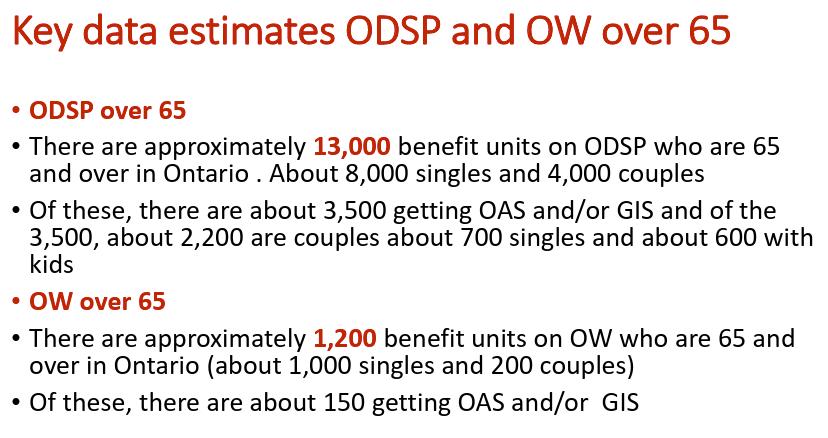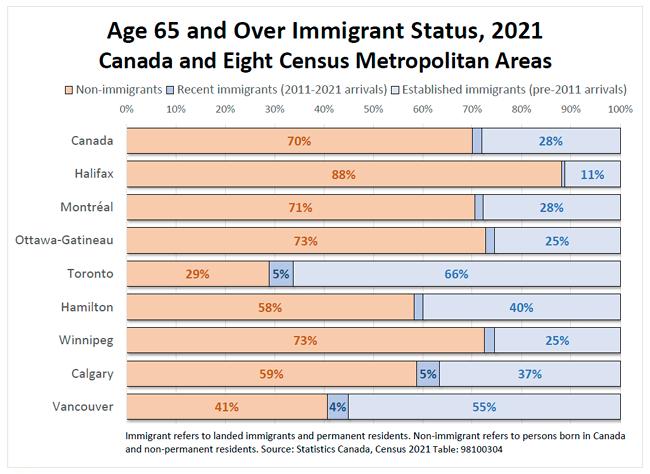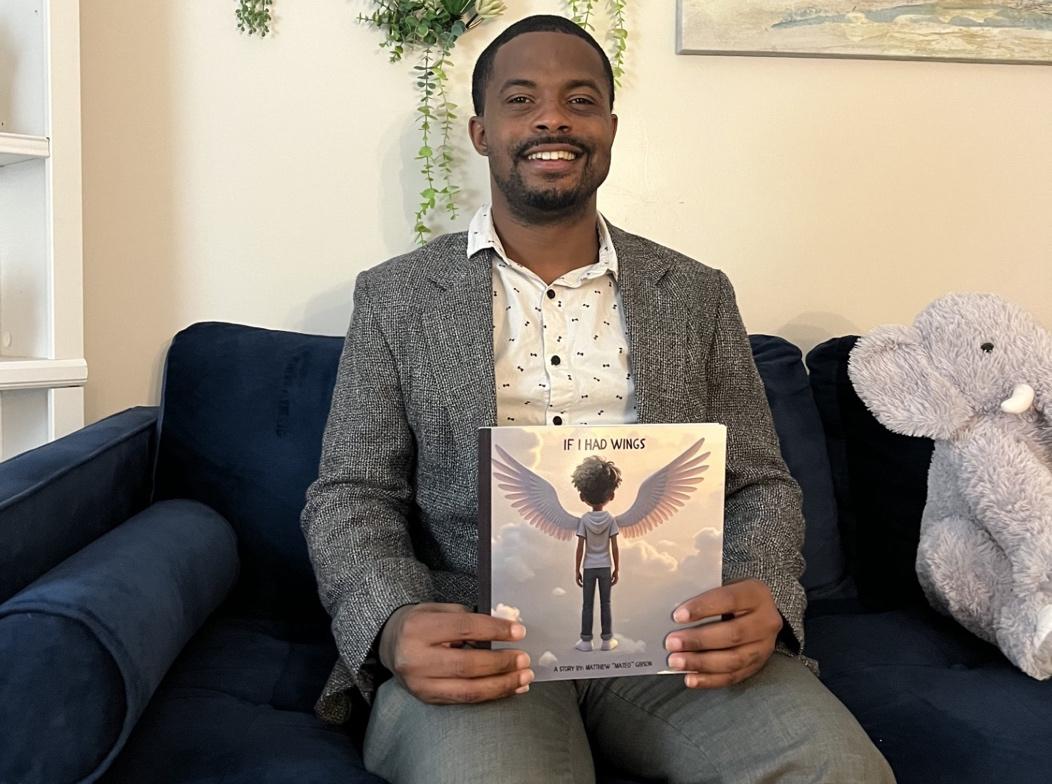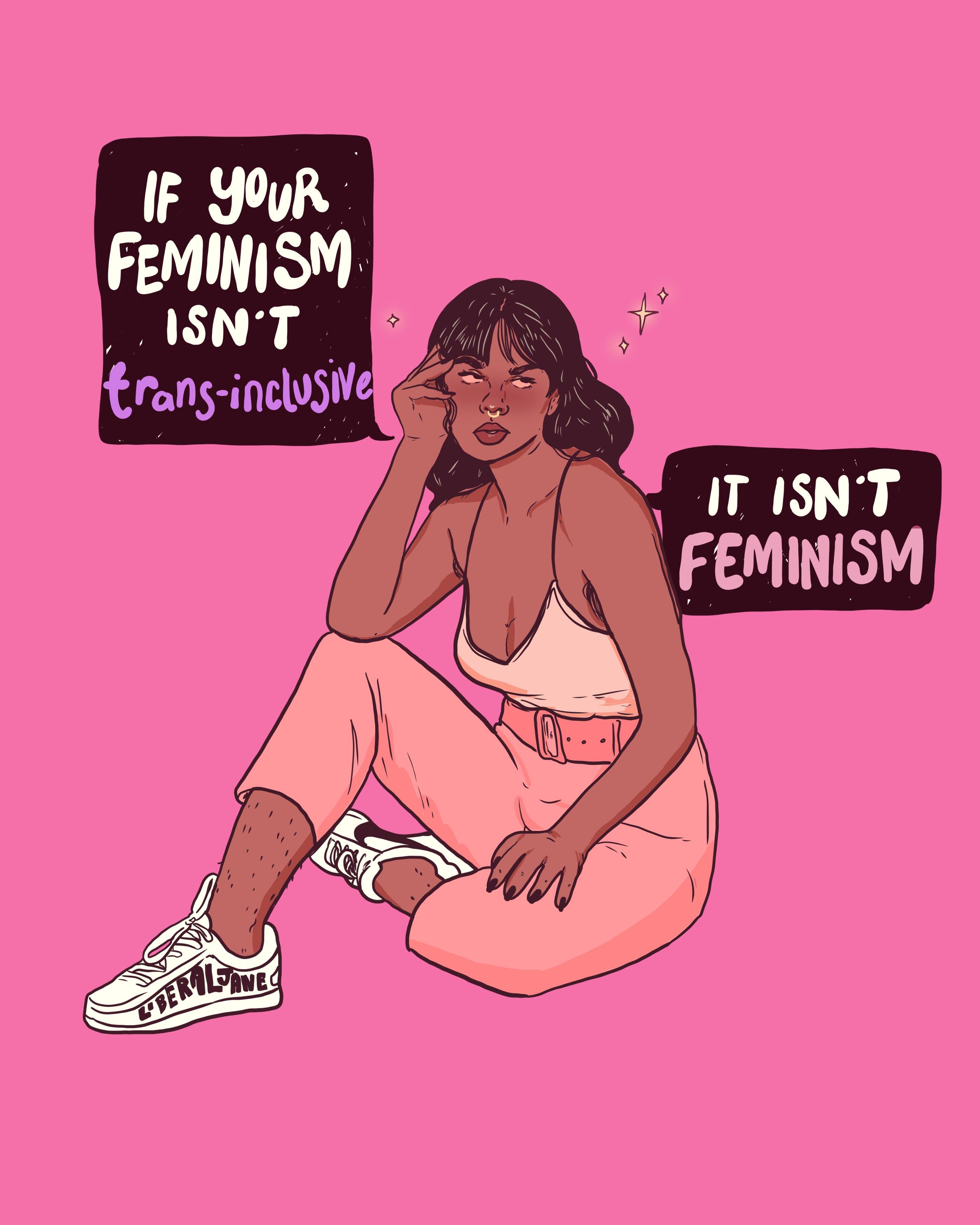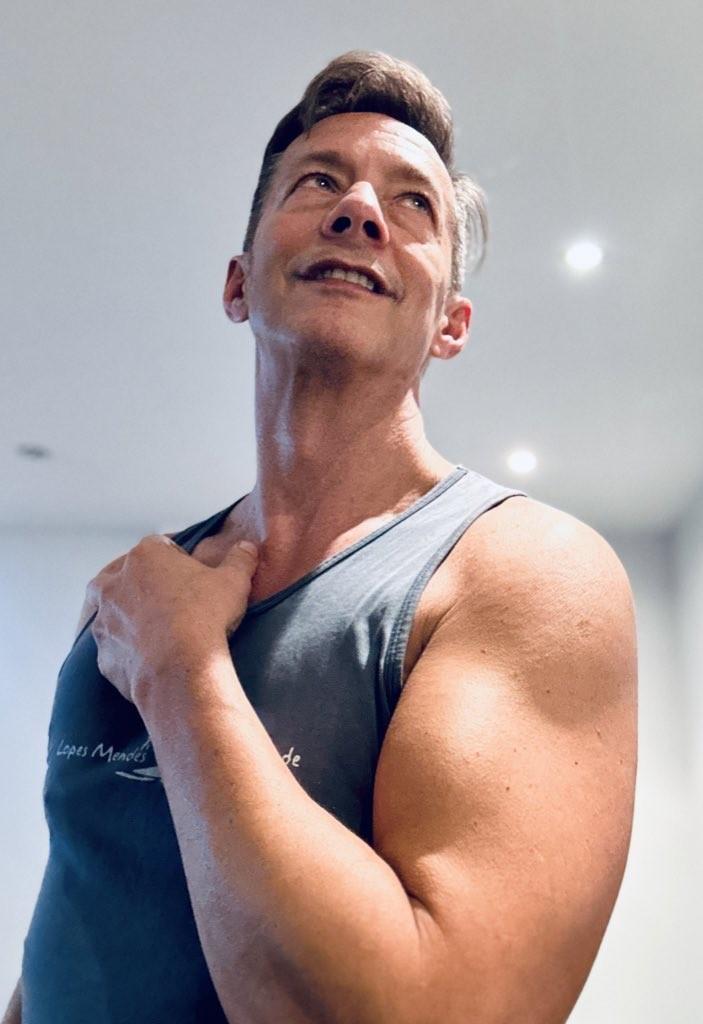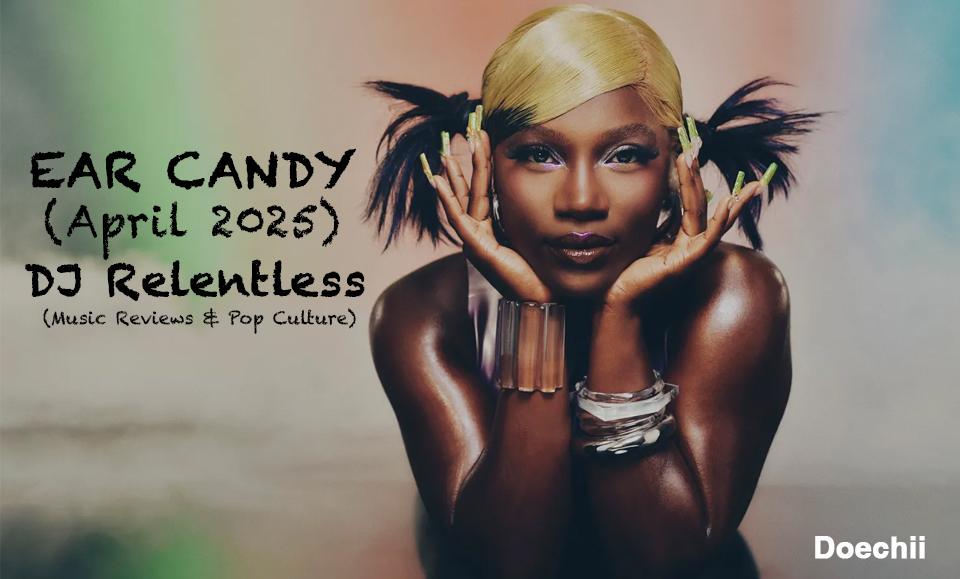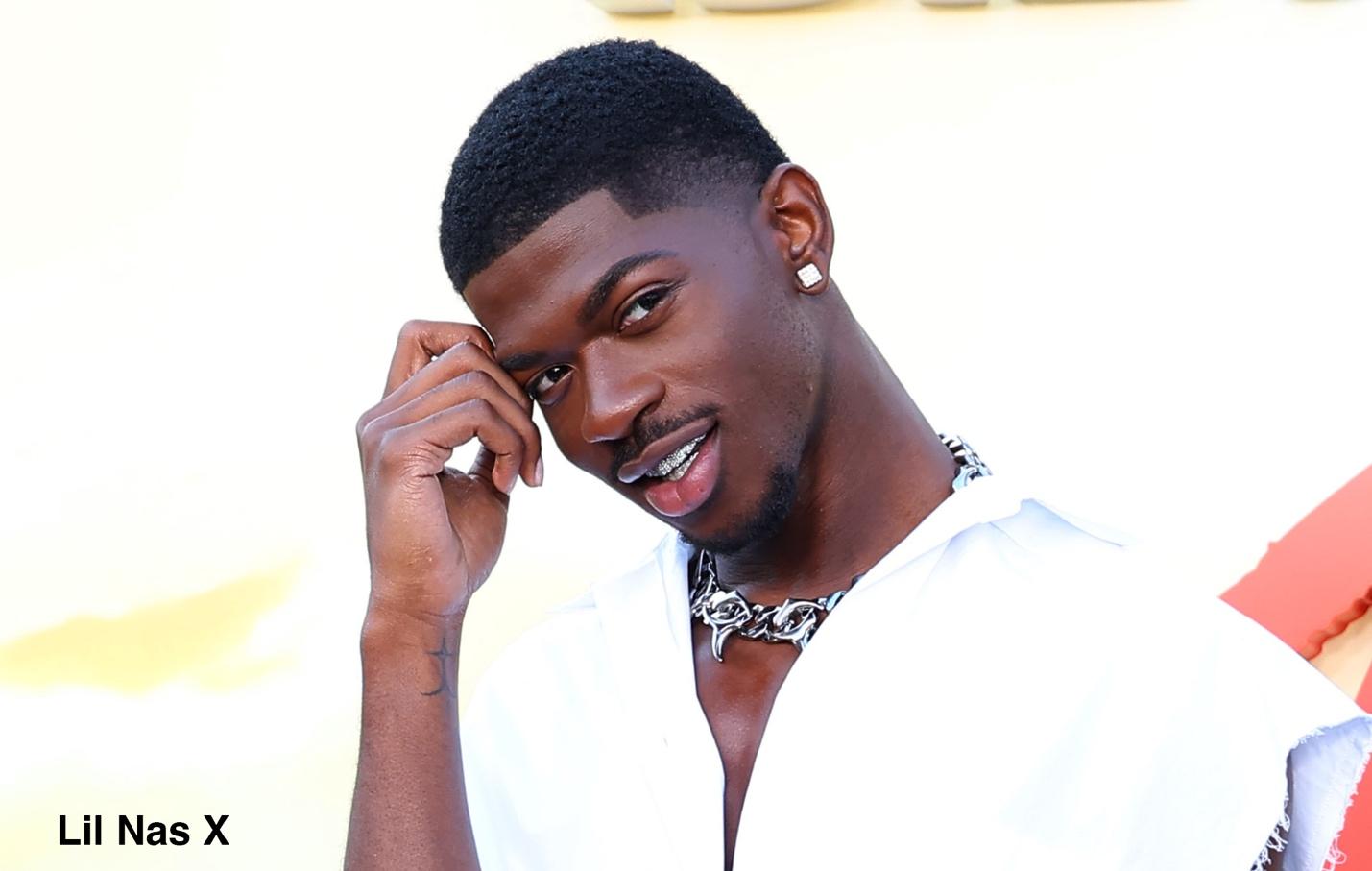HIV Activist Mateo Gibson celebrates his first Children’s Book
Last year in the July 2024 issue of POZPLANET we introduced you to an activist in Florida by the name of Mateo Gibson. We are always proud to hear from past featured persons who are doing the work and making a difference. We are told that Mateo has a new children's book and decided to sit down with him and find more and how you can buy it.
AK: My goodness...you've been a busy young man. Thank you for chatting with me today. Can't wait to hear about your new book. How are you?
MG: I am truly honored and excited about the recent release of my book. The support I’ve received from so many has been incredibly meaningful, and I am deeply grateful for it. I wrote this book with the intention of helping others, and in doing so, it has also been a transformative experience for me. It has allowed me to reconnect with my inner child and explore my creative passions in ways I hadn’t anticipated.
AK: So, let's get to your new book...can you tell us a little about what the book is about and why you decided to write it?
MG: This book is more than just a story; it is a poem, a love letter, capturing the essence of my childhood experiences and reflecting the emotions that many children may encounter daily. My hope is that young readers will recognize the power of imagination as a tool for self-expression and personal growth, one that can inspire and shape their passions throughout life. As a lifelong dreamer, I am a testament to the transformative power of imagination and creativity, and through these, I am turning my dreams into reality.
AK: This sounds like this might have been cathartic for you to write this. Was it?
MG: Writing this story has been an incredibly cathartic experience. It allowed me to reconnect with my passion for the arts and provided me with an opportunity to explore my creative potential. The process taught me valuable lessons in discipline, gave me a renewed sense of purpose, and reinforced my belief that I am capable of achieving anything I set my mind to. Through this journey, I also developed new skills, including editing, and have since encouraged others to embark on their own writing journeys. I believe in the transformative power of the written word and its ability to foster personal healing and self-expression.
AK: Well, I always feel it is important to get positive messages to our youth. I wish I had a book like this when I was a kid. How can our readers get your book?
MG: My book, If I Had Wings, is widely available on Kindle and Amazon. I am also active on social media, and you can follow me on Instagram, TikTok, X, and Facebook @ifihadwingsbook. I want to emphasize that this book is not driven by profit; rather, its purpose is to inspire others especially children to dream big. There are countless untold stories, and this is mine. I would love to hear yours as well. I am always available to offer advice and support to anyone looking to share their own story.
AK: Thank you again, Mateo and much success to you on this new endeavor. I look forward to your next book.
If you’re in Toronto, you should join our new LGBT Film Club called PINK CINEMA! There’s no fee or cover charge to the showings. We meet every third Tuesday of the month at STUDIO 163. There is a suggested donation of $2 or more at the door (which goes directly to the Toronto People With AIDS Foundation). By joining our Facebook group here: https://www.facebook.com/groups/195374003920591 you can vote on what movie we will show. Our next event is on April 15th, 2025. And our choices this month are “JeMrey” , “ Trick” and “Without You I’m Nothing ” . We have a concession stand with $1 cups of Popcorn, $1 Pops, 50¢ Candies and 50¢ Chips. So come join us! It’s a great date night! It’s not only a great Community gathering but also an opportunity to learn about our LGBTQ2+ History through cinema. Proudly sponsored by ViiV Healthcare
A FEW WORDS FROM HIV ACTIVIST RYAN ALVEY
The Silence of HIV Organizations & Government Agencies is Killing Us For years, I have been fighting discrimination, corruption, and systemic failures in the very organizations that claim to serve people living with HIV (PLHIV). I have filed complaints with HRSA, HHS, CDC, DOJ, EEOC, KCHR, and multiple HIV service organizations only to be met with silence, stonewalling, or outright retaliation.
Matthew 25 AIDS Services was charged with discrimination by both the EEOC and KCHR. Instead of taking accountability, they denied mediation.
HIV advocacy leaders and organizations have refused to take a stand. Many have read my messages and ignored them.
HRSA and CDC, responsible for ensuring federal HIV funds are used properly, have ignored my concerns.
I have been blacklisted from employment in HIV services for speaking the truth.
This isn’t just about me. This is about every PLHIV who has been pushed aside, tokenized, or exploited while organizations profit off our existence.
HIV organizations that refuse to be led by PLHIV are part of the problem.
Government agencies that ignore discrimination complaints are complicit in the harm.
Leaders who choose silence are betraying the very people they claim to serve.
I refuse to be silenced. I refuse to let HIV service organizations continue to take funding while failing the people they exist for.
I am calling on:
HIV organizations NMAC AIDS United Lambda Legal HIV Law Project Center for HIV Law & Policy Southern AIDS Coalition The SERO Project Human Rights Campaign Elton John AIDS Foundation The Elizabeth Taylor AIDS Foundation– Take a stand against discrimination in your own spaces.
Journalists & media ProPublica POZ Magazine TheBody.com Positively Aware The Advocate HIV Plus Magazine Plus Life GLAAD – Investigate and expose the corruption within these systems.
Government agencies Health Resources and Services Administration (HRSA) Governor Andy Beshear U.S. Department of Health and Human Services Rand Paul The United States Department of Justice– Do your jobs. Enforce the laws meant to protect us.
I have lost opportunities, income, and even my own community because I spoke up. But I refuse to let this continue in silence. Too many people with HIV suffer in silence, afraid of retaliation. I won’t be one of them. And I won’t let you ignore us anymore.
This is not just a moment. This is a movement. HIV justice means nothing if we do not hold our own institutions accountable.
Will you stand with me, or will you be part of the silence?
#HIVJustice #EndTheSilence #AccountabilityNow #PLHIV #HIVAdvocacy
#EndDiscrimination



Recently CATIE held a webinar that looked at the Infant Feeding recommendations for parents living with HIV. (https://vimeo.com/1062922081 ) I was diagnosed with HIV in 1991. I had a one and three year old, both of whom were being breastfed. I was not informed by my General Practitioner to stop breastfeeding nor that there was a potential risk of transmission if I did not. Both my children are HIV negative. When I was referred to an HIV specialist, they also did not tell me to stop breastfeeding. They didn’t ask. There are many, many stories from women living with HIV of this happening in Canada. And yet currently the recommendations from the Canadian Pediatric & Perinatal HIV/AIDS Research Group in 2023, https://utppublishing.com/doi/full/10.3138/jammi-2022-1103?utm_source=CATIE+Email+Subscriptions&utm_campaign=4b6881c736EMAIL_CAMPAIGN_2025_02_19_02_02&utm_medium=email&utm_term=0_-4b6881c73645821543 state “The Canadian consensus guidelines continue to support formula feeding as the preferred method of infant feeding as it eliminates any residual risk of postnatal vertical transmission. Formula should be made available for all infants born to mothers living with HIV for their first year of life. A comprehensive approach to counselling WLWH [women living with HIV] is outlined to assist providers to efectively counsel on current evidence to ensure WLWH are fully informed in their decision making. For women meeting criteria to and elect to breastfeed, frequent maternal virologic monitoring and follow-up is required of both mother and infant. Antiretroviral prophylaxis and monitoring are recommended for breastfed infants.”
The webinar discussed further recommendations that have been made by researchers in Canada: https://www.cmaj.ca/content/197/1/E15#msdynttrid=u55IrY1SwMRh3fuXikRzqS4BHBuL2hnLzzf56yLRc This paper states that “The risk of perinatal HIV transmission from breast or chest feeding has been shown to be very low (likely < 0.08%–0.16%) when a person with HIV is on antiretroviral therapy, virally suppressed, and under the care of a clinician. Breast or chest feeding by such parents has *clinical equipoise with formula feeding, considering the benefits of human milk to infants [*clinical equipoise refers to a situation where there is honest disagreement or uncertainty within the expert medical community about which treatment is superior]. Infant feeding
recommendations in some high-income countries have changed from promoting solely formula feeding to presenting formula and breast or chest feeding as equivalent options for parents whose HIV is suppressed. Canadian guidance should ofer formula and breast or chest feeding as equivalent options, using a supportive shared- care and informed decision-making process.”
The Canadian guidelines and the recommendations are clearly at odds: the guidelines state that women living with HIV should formula feed and if they don’t, they must have frequent checkups to check their HIV viral load and that their infants must be on HIV antiretroviral therapy. It was pointed out by participants in the webinar that frequent checkups (it is recommended this is every 3 months), is often very difficult for women living with HIV, especially financially. There is also very little known about the long-term effects of exposure to HIV treatment for infants. The recommendations from Dr Mona Loutfy and Logan Kennedy state that the risk of transmission via breast/chest feeding is very low and that women living with HIV should be fully supported to make a decision around this choice whether to breast/chest feed their infant or formula feed that is best for themselves and their infant.
Unfortunately, these recommendations are only that: recommendations. They do not change the guidelines that I first referred to: that in spite of the extremely low risk of transmission of HIV to an infant through breast/chest feeding, the Canadian guidelines for women living with HIV state that parents must formula feed and if they choose to breast/chest feed, they are subject to very strict “guidelines” around how that can happen. This is very concerning for a myriad of reasons that the participants at the webinar I attended highlighted. One of the webinar panelists, Dr. Mona Loutfy, an HIV specialist, founder of the Women and HIV Research Program at the Women’s College Hospital in Toronto, Ontario (and co -author of the recommendations paper) pointed out that the risk of transmission to an infant from a woman living with HIV via breast/chest feeding is “a theoretical risk”. I have spoken to many women living with HIV in the community who come from cultural backgrounds where their community expects them to breast/chest feed their baby and if they don’t, the stigmatizing attitude from some people is that if a woman doesn’t breast/chest feed, they must have HIV. An anonymous person presented her story in the webinar and described how when she expressed to her pediatrician that she wished to breast/chest feed, it was met with strong resistance. The woman ended up having to go to a children’s hospital, where fortunately she was given the care and support she needed to make her own choice around whether she formula or breast/chest fed her infant. There was a comment from the audience that “Black and Indigenous women face
disproportionate risk of investigation and child apprehension post labour and delivery due to medical racism and systemic racism in child protective services.” This is one of the reasons why we need to have the Canadian Guidelines support a woman’s right to choose what is best for her family and have the support to do so. These guidelines need to clearly state that a woman living with HIV has the right to choose, or healthcare providers in the community will not support women living with HIV to make the choice that is right for their family and will be pressured into making choices that could stigmatize themselves. Healthcare providers need to ensure that women living with HIV who choose to breast/chest feed are not criminalized and be threatened with their child being apprehended by child services.
We need to educate the community, the legal system, the children’s services system and the healthcare system around the needs of women living with HIV who are making the choice to either breastfeed or formula feed their infants. Until we make the efort to create Canadian guidelines around these choices, women living with HIV will continue to be further stigmatized and their choices for what is best for their family will not be supported.
CATIE strengthens Canada’s response to HIV, hepatitis C and the toxic drug crisis by bridging research and practice. We connect healthcare and community-based service providers with the latest science, and promote good practices for prevention, testing, treatment and substance use health programs. Find more information here: https://www.catie.ca/
Today I am going to sit down with the former CEO of aidsmap and Gay Men Fighting AIDS, Mr. Matthew Hodson. It is always good to talk to our advocates who have been on the frontlines of standing up for our rights and against stigma.
AK: Hello Matthew...thank you for your time today. How are you?
MH: That's a tricky one to answer right now. Normally when people ask, ‘How are you?’ the instinctive answer is, ‘I'm fine’; but the truth is it’s really hard to feel ‘fine’ at the moment when so much in the world isn’t fine. I'm angry. It feels like the world has become more dangerous and destructive than at any other time I’ve known.
Much of my life has been consumed by a passion for LGBTQ rights and a desire for world where HIV it's no longer a barrier to anyone's health or happiness. Until recently it felt like things were at least moving in the right direction on both of those issues - but I don't see that as the case anymore. So I’m struggling at the moment, asking myself what can I do to make a meaningful difference? What can I do to effect positive change? And how can I maintain a healthy level of calm, and, even, still experience and express joy, when I see my friends and comrades in the US and globally facing such threats?
AK: Well, before we get into the activism let's find out a little about you and your background. Where are you from? Where are you currently.
MH: I was born in London, England and, 57 years later, I'm still living here, just a couple of miles from the house where I was born. When I was younger I dreamed of living in America but I can't see that happening now. But London is a great city with wonderful theatre, impressive buildings old and new and it’s very diverse and LGBTQ friendly. You should come.
AK: I believe you have read our format of questions...this is where I ask about how long have you been positive and what was it like when you were diagnosed? Did you go on treatment right away?
MH: I was diagnosed with HIV in 1998. It was just 18 months after the Vancouver conference which established the effectiveness of anti-retroviral therapy. At that point treatment was still new so our medics did not know quite how effective it was or how long one could live with HIV on treatment. When I received my diagnosis I was told to expect to live for about another 20 years. I was close to London’s AIDS epicentre, having been involved in gay activism since my University days, and had lost many friends. Twenty years when I was 30 felt like a long time but not long enough. When I turned 50 and sailed past that 20 year prediction I felt a strange mix of emotions. On the one hand I was grateful to still be alive and to still have my health but it also made me feel incredibly sad for my friends who did not have that opportunity. And it made me feel angry that there are still people without secure access to lifesaving HIV treatment.
When I was diagnosed there was not the range of medications available that there are now and some of the dosing had not been perfected. As a result the side effects of treatment were pretty
grim so, in 1998, we were not advised to start treatment until our CD4 count dipped below 200. I felt I was able to cope emotionally living with HIV but the thought of being on medication, constantly being reminded I was sick, terrified me.
I started working at the charity Gay Men Fighting AIDS. I wanted to use my limited years remaining to be a part of the fight against HIV infections and to support people who, like me, were living with HIV. I was pretty poor at looking after myself though. I'm ashamed to say that I actually dropped out of medical care at one point. My life got so busy that I ceased to prioritise myself or my own health. When I re-engaged with care in 2003, my CD4 count had dipped and I needed to start treatment straight away.
AK: Like many I didn't come out about my status for a while out of fear. How did you decide to come out and what made you become an activist?
MH: I came out as gay in the 1980s when LGBT people and gay men in particular were not treated equally under the law. The age of consent for gay men at that time was 21 while it was 16 for heterosexuals - and of course we couldn’t marry or adopt back then. I was at university when the UK’s Conservative government under Margaret Thatcher introduced a piece of legislation called Section 28 which banned the promotion of homosexuality.
Matthew on a candlelit vigil for people with HIV and AIDS in 1987. Also in the shot are Ian McKellen and Chris Smith, the first British MP to be open about his HIV status.
I remember going on a protest against Section 28 in Manchester in 1988. At the time it was the largest gay rights demonstration they had ever been with 20,000 LGBT people and our allies attending. That number was mirrored by a similar number at Pride that same year and from then on the numbers who showed up for Pride just kept on increasing.
As our movement got stronger and larger it became easier for people to come out as lesbian, gay or bisexual or transgender to their colleagues, to their families and to their friends. It's much harder to hate people when you know them. And so with so many people being open about their sexuality or their gender identity we began to make huge progress in the battle for legal equality.
The lesson I took from this was that the only way we would be able to tackle HIV stigma was by having people who were willing to be open about their HIV status. I knew that I wanted to be open about my status, but it was still scary.
When I had come out as gay to my mother in 1985 the first thing she said to me was, “Well I expect you'll get AIDS and die then.” She didn't mean it harshly, she worked as an occupational therapist and pretty much all of the gay men that she knew were clients of hers who had AIDS. And all of them died. When I was diagnosed that memory left me feeling ashamed that I had fulfilled her prophecy and so I didn't want her to know. Years later that decision was taken away from me when a journalist called her and told her that I was HIV positive because they wanted to record her reaction. That led to a very difficult time in my relationship with my mother but the good thing that came out of that horrible incident was that there was no longer anyone in particular I felt I needed to hide my status from. So in 2016 I wrote a piece for a magazine about the importance of openness about HIV, declaring that I was living with it too.
When I did finally come out of the viral closet it felt like an enormous relief. I realised how much my own self stigma had been holding me back. Being completely open with everyone, my family, my friends and, through social media and mainstream media, the whole world, made my life easier. It was liberating. I wish I'd done it earlier.
AK: So, tell our readers about the site AIDSmap and the organization Gay Men Fighting AIDS.
MH: I joined Gay Men Fighting AIDS in 1999. At that time British society was still fairly homophobic with several laws discriminating against LGBT people and particularly gay men. A lot of the mainstream HIV prevention work was very coy, very restricted. What Gay Men Fighting AIDS did, which was radical at the time, was celebrate gay lives and gay sex. The burden of shame which gay men were taught to feel did nothing to help us maintain and

enjoy a healthy and safe sex life. Our work was sex positive, often explicit, and we used the same language about sex the gay men generally used in conversation with each other. Later Gay Men Fighting AIDS morphed into HERO - the health equality and rights organisation. When the numbers of gay and bisexual men acquiring HIV in the UK began to drop it made sense for the organisation to focus on some of the other health inequalities that LGBTQ people face, including challenges with drugs and alcohol. I worked for GMFA for 17 years and I feel that its DNA is permanently mixed with mine - so I'm delighted to see that it acknowledges the multiple health challenges that our queer communities face.
Aidsmap provides news and information about HIV and AIDS to audiences all around the world. It was a challenge moving from an organisation that was very focused on public health in the UK to one that worked on an international level - but that is where the greatest
challenges of HIV remain. It frustrates me that, more than 40 years into the epidemic and almost 30 years since we have been able to treat HIV, there are still millions of people living with HIV worldwide who are not able to access medication. And if the work of PEPFAR (the President's Emergency Plan For AIDS Relief, founded by George W Bush) is halted that will mean 20 million people who currently receive their HIV treatment from PEPFAR will once again be facing the threat of AIDS.
I was passionate about my work at aidsmap but unfortunately in 2022 I got sick. I struggled on until the end of 2023 but I wasn’t getting better so I asked the aidsmap Board if I could take a sabbatical. It quickly became clear to me, through reflection and meditation, that if I was going to be serious about regaining my health I was not ready to return to work and so I left aidsmap in April last year. Aidsmap is currently on hold but it's work will be picked up by the UK's largest HIV charity the Terrence Higgins Trust and all of its information will still be available on the aidsmap site
My life is very different now. My health is improving and I am enjoying taking part in events where I speak about HIV and the struggle for gay liberation. I'm also doing some writing and have started acting again - which I love. I used to act full time but when I was diagnosed it felt too difficult to continue with that and face the challenges of HIV. Then in the years before COVID I returned to the stage with some shows on the London fringe, like The Clinic, Queers and The Chemsex Monologues, and even an online TV series called The Grass is Always Grindr’. Now that I have more time, it's been really fun to explore that side of my creativity again.
AK: And before I let you go...what advice would you give to a newly diagnosed person? Everyone's journey with HIV/AIDS is different but what do you think is the most important thing to do when you first find out?
MH: If you've been recently diagnosed with HIV the most important thing to do is understand that your life isn't over: you can still be healthy; you can still have children and grandchildren; you can have loving relationships and great uninhibited sex (these may come in hand in hand - or not).
Take in as much information as you need and can handle, ensure you develop a good working relationship with your health care provider. Keeping you well is a team effort and you are the team captain.
And finally, don't forget to moisturise - you're going to live for a long time!
AK: Well, I am so glad that we talked with you today. If you ever have something else you'd like to share with POZPLANET please feel free to contact me and we will get it in the magazine. Thank you again and I hope that our paths will cross again soon.
MH: Thank you so much for asking me to be a part of your magazine. I think it's so important that people who live with HIV, and also people who do not have HIV, can hear our stories, it helps to break down fear and ignorance. HIV has always hit the most marginalised communities the hardest and in these difficult times it's more important than ever that we stand together.
I guess I’m at the age of witnessing historic places close and disappear. Because of Conservatism in North America many LGBT venues are shutting their doors for good. I have been blessed to have DJ-ed or performed at many in New York City. I lived there from 1992 to 2009. Places like The Limelight and The Palladium were definitely great venues on my resume. So, when I heard another of the bars that I had residencies at was closing, I thought I should tell my story of what it was like to be a Black DJ in the 90s.
When Barracuda opened, I was a DJ/VJ for The Works and The Break which were both owned by a guy named Andrew. Like several other bars in New York City in the 90s, I broke the color barrier when I got hired. The Works was a video bar on the Upper Westside and The Break was a local drinking spot in Chelsea on 8th Avenue. I wasn’t given a lot of shifts at either bar and I heard that Bob & Stephen were opening a bar right around the corner from The Break. So, I applied. To my surprise I got hired at Barracuda. It took off immediately because of the layout and the stage. There was nothing like it in Chelsea.
I don’t believe I will get credit for being a Black DJ at venues like Stonewall, The Monster, Splash, CBGB’s and The Pyramid but it was very important that I did. This began the visibility of people of color in a lot of these spaces. And while the patrons at Two Potato and Chi Chi’s accused me of being a “sell out” for spinning in these “white venues” they never realized that I was helping change the landscape of the scene by being flexible in my music and programming.
I think that I got hired because I was a new DJ on the scene. I was working at The Hangar on Christopher Street in the Village as well at J’s Hangout (an afterhours jerk off club in the Meat Packing District). I’ve always had an ear for mixing Club tracks with Commercial Pop
hits sprinkled with Disco and R&B. So, I kinda could work most rooms that were bars and watering holes. Since Mayor Rudy Guiliani was cracking down on the gay scene by enforcing outdated Cabaret Laws there was no dancing in a lot of spaces. The city would fine you if there was dancing and you didn’t have a cabaret license. If you were caught three times your establishment would be shut down. So, being able to spin for a room that couldn’t dance was definitely a learning curve, but it taught me how to not only mix music but how to program it.
Well, when Andrew (the owner of The Works and The Break) discovered that I had been hired for his competition around the corner, he called me to a private meeting and ask me what I would need to quit Barracuda. I said that more hours and prime nights would do it. He gave them to me and I became a major part of his bars. So, I only ended up working for Barracuda for about three months. Since I didn’t work there anymore, I did return as my drag persona Jade Elektra and entered the talent contest hosted by Mona Foot with DJ Gant Johnson. I even won a few times. The best was performing “The Oldest Profession” from the Broadway musical, “The Life” and Lillias White who sang the song in the show was in the audience.
I left NYC at the end of 2009 but would drop in to Barracuda from time to time on my visits. It was always a happening spot with a good energy. So, like I did with Escuelita, The Hangar and J’s Hangout I created a mix to give a little history and context to what these places meant to New York City’s LGBT nightlife.
I’m sure the music changed and adapted over the years as Hip Hop and Ballroom became Pop Music. And even though I did spin for Black venues like Two Potato, Chi Chi’s and Langston’s, I’d like to think that my presence helped in changing the formats of what was considered their bars and our bars. Segregation has never helped communities. We all have so much to learn from each other. I guess that’s why I love being a DJ who could step into any situation and spin.
Shortly after I started working at Barracuda I had the fortunate of obtaining the acetate of the Warren Rigg Club Mix of “I Want You” by Madonna. One night at J’s the A&R guy from Nervous Records came in and was looking for some nose candy but didn’t have enough money. So he sold me the acetate for $50. I guess he thought that I was a pawn shop because he returned the next night asking to buy it back. I told him no way! This remix was very rare and hard to get. So, I started my tribute set with it.
LISTEN HERE:
https://hearthis.at/djrelentlesstoronto/barracuda-the-end-of-an-era-1995-2025
FREE VIDEO DOWNLOAD:
https://mega.nz/file/JvM3jRyS#gt1CeQFmXEzx_xYDQm4zqhHnv99CIo4KxALUdUD8N9E
Listen to the mix here: https://www.mixcloud.com/djrelentlessny/ear-candy-april-2025
Download your free video of this mix here: https://mega.nz/file/MzFV2LRb#Rd948bsl7Y5ZuD4amNhnB8ZG7yBaixUIxaw_6n7VhdA
Subscribe to DJ Relentless’ Mixcloud page: https://www.mixcloud.com/djrelentlessny Follow DJ Relentless’ HearThis page: https://hearthis.at/djrelentlesstoronto
Is spring here? Cuz I tell ya...with all that's going on in the world it still seems pretty cold out there. Hopefully this month's mix will be a nice distraction. Music has always been the cure for whatever ails me. So, I have twenty-five tracks to talk about. And artists like Doechii and RAYE make a couple appearances on the playlist for April 2025. We've got some new tracks but also some remixed oldies as well. Somethin' for EVERYONE...
Now before we start , I should come clean and tell you that I often do the next month’s mix by the 15th of each month. And of course, there is always new releases that come out right after I have finished by programming. So, there’s a new Lizzo, a new Jack Harlow featuring Doja Cat and many more. So, these will be in the May issue. Hopefully there will be tons of remixes for me to choose from.
But we have five LGBT Artists and four ally artists in April’s playlist.
And to start us off is my Relentlessly Touched Vocal mix of “ANXIETY” by my homegirl, Doechii! I called it last year. I knew she was going to blow up. She moved into the space where Azealia Banks should have gone. Both are very talented by
Doechii is concentrating on the work instead of attacking any and everyone online Billboard named her Woman Of The Year and it’s only April! And folks love her so much that her rerelease of 2019’s “ANXIETY” is charting high and everybody and their brother is hammering out remixes. I can honestly say that I did mine first on March 12th .
You know I love when they dig up a classic and breathe new life into it. And our second selection is the Jophil Remix of “Real Love” by Mary J Blige. There was an official house mix a few years back, but the vocal effects used made her sound like a man. So, I continued to play the MuthaFunkaz Remix of the Toby Lightman version. But now I actually have a real Mary vocal that I can work with.
While I am not enjoying the latest album by The Weeknd others seem to be lovin’ it. So, I chose the Sefu Remix of “Open Hearts”. The remix is okay but there are a few key changes in the vocal that seem a little off for me.
I was laughing with my husband the other day about the amount of “Gay Content” that is being dropped as the LGBT Community is being attacked and villainized. The gay artists are coming out as bold as ever and Lil Nas X has not only taken my advice of changing his flow as a rapper but also is just as unapologetic as fuck! His new single “RIGHT THERE!” is just begging for a remix at 125 BPMs. And it’s just been announced that Lil Nas X & Lizzo are headlining the 2025 Outloud Music Festival
With songs like “I Hate Your Ex Girlfriend” by BANKS featuring Doechii, it’s no surprise that Anne-Marie’s latest single is “I Don’t Like Your Boyfriend” as our fifth track. I like it. It’s a cute Pop song.
You know, as soon as I heard that Drake was trying to sue Universal Music Group over Kendrick Lamar’s “Not Like Us” I felt embarrassed for him. But when I saw this new release of the Hills Remix of “Gimme A Hug” I realized that he’s never gonna recover from this ass whippin’ . According to the lyrics he’s in a strip club and greeting the strippers. How pathetic! In a statement read on TMZ they basically called Drake a whiny little bitch. During the Super Bowl he was in Australia. He better stay there.
Our seventh selection is the new bbno$ called “Antidepressants”. So, I’ve been kinda crushin’ on him since I started playing his music. In this music video he has given me hope since he has a passionate kiss with a dude. And he has said he wants to do a duet with Lil Nas X. Um…yes please! Love the track but it was too fast at 139 BPMs. So, I slowed it down to 126.
Spaeking of someone stepping into the space where another artist left off, RAYE is exactly where I imagine Amy Winehouse would have been had she not been a drug
addict. And her performance of “Oscar Winning Tears” at the Grammys this year was top notch as usual. So, I was super excited when learned of the Los Padres & Jay Mac Remix. Unfortunately like the last song it too was too fast. So, I slowed it down to 125 BPM.
Our ninth track is another classic taken from my early days of DJ-ing in the 80s. It’s the Ghostbusterz Holy T Remix of “Prove Your Love” by Taylor Dayne. I always welcome the opportunity to introduce a new audience to the past with a good remix. This is a good one.
Up next is the new Barbara Tucker, Golden Factory & Massimo Logi called “Try My Love”. There are several remixes for this one but the one that stuck out for me was the Angelo Ferrer Remix Unfortunately, there is no music video for this one. House music budgets are getting slimmer and slimmer. Trust me…as a recording artist and producer I know this fact too well. These days as the music industry has gone digital you barter and trade for vocals and remixes just to get a track out.
So as groups like BTS have splintered or disbanded, I guess BLACKPINK has also. I never got into the K-Pop thing. To me it’s just American Pop music done by folks from other countries. So, I never kept up with the groups or their popularity. But LISA and JENNIE from BLACKPINK are solo artists now and LISA has teamed up with Doja
Cat & RAYE to bring us “Born Again”. The original is alright but the Purple Disco Machine Remix is the best version in my opinion.
Over the years there have been all kinds of remixes of our twelfth selection. It is truly a Disco classic. But when I heard the Willcox Remix of “Stayin’ Alive” by The Bee Gees, I felt like it finally got the remix it deserved. I could play this for a dance floor right now and it would stand up with all the chart toppers happening right now.
Up next we have a couple of really great Latin Club tracks. The Dirty Sou Tech House Mashup of “Hoy Te Toca” by John Summit and the Sisco Kennedy Remix of “Carnival” by Cheat Codes & Ownboss are both bangaz!!!
For our fifteenth track I had to slow it down to make it work in my mix. Not sure if it’s because it is Merengue or if it’s sped up for TikTok. Record labels are trying everything to make sure their music is shared and fits the format for some sites. But the new Ricky Martin was way up in BPMs and I had to bring it down to 126. The video was labeled the Extended IT Mashup of “La Mordidita”. I think it sounds better where I left it. This is the speed I would play it. I’m just glad social media stopped with the rumors that Ricky and Troye Sivan were dating. Ridiculous!

Now, don’t tell my husband but my Baby’s Daddy has a track called “Baile Inolvidable”. And as I have said in the past I don’t understand a word of what Bad Bunny is saying but he could read me the ingredients from a Doritos bag in Spanish and I’d hang on every word. And with the Jesus Escalante Tech House Mix I now have a hot new track to play for my floor. And of course I couldn’t resist including a shot from his recent Calvin Klein campaign. Hell…even not quite out of the closet Shawn Mendes had to give him kudos on how good he looked.
I was joking with my husband about how now that it’s okay in Trump’s America to say off color or politically incorrect things, my video pool recently posted the Black Eyed Peas original video for “Let’s Get Retarded”. What was considered insensitive twenty-two years ago is now okay. A week later the same pool posted the Bolinger Super Sounds Remix of “Let’s Get It Started”. This is a great House version of this Pop song. I’d play it!
I have to be honest. I probably would not have even given this track a listen at all if it weren’t for Doechii being featured. “ExtraL” by JENNIE would have been ignored. But I love Doechii and I will always check out anything with her name on it. And believe it or not I found the TIMO Remix and was pleasantly surprised. I would play this.
Our nineteenth selection takes us back in time when Drake & Kendrick Lamar were civil to each other. Some might even say they were friends. It’s the DJ Aash Money House Bootleg of “Fuckin’ Problems” by ASAP Rocky which featured them both. I kinda wish this remix had been around when it was released back in 2012. I could have slid this into a Club set back when I worked at Twink bar here in Toronto. But I guess the remix is in celebration of ASAP being acquitted on Felony Assault charges. In any case, this is a great remix and I will be playing it!
Back when I used to work at that Twink bar, I always mixed “Fuckin’ Problems” with “Problem” by Ariana Grande featuring Iggy Azalea. Ironically, there is a 5HOURS Remix has popped up as well. So, I couldn’t resist recreating my old programming. This is another great remix that makes it accessible for a newer audience.
As much as I complain about GloRilla and her choice of a name you’d think that I would avoid any of her music. Do I still hate her name? Absolutely! But the remixes of her tracks are beginning to grow on me. Like the MINX Club Mix of “TGIF” is definitely a banga!
You know I love giving props to our LGBT artists and John Duff is one of the most unapologetically OUT artists of our times. And the James Anthony Remix of “Stick Up” is hot! He plays several characters in the video and I’m a little jealous of how much money he must have access to get all these music videos made. I love watching him. He’s sexy as hell but I kinda feel like he’s would probably be a little obnoxious in person. Prove me wrong, John…please.
And speaking of obnoxious, I decided to include the last time I liked a Kanye West track only to be able to talk about his latest insanity. “I Love It” was his last hit for me. It’s been downhill ever since. And him using his daughter’s vocals on a track where he tricked Diddy into a taped phone conversation is just wrong on so many levels. Kim Kardashian should definitely get sole custody of their kids and Diddy should sue him from jail. It’s almost like Kanye is going out of way to offend everyone. After being criticized for “Lonely Roads Still Go To Sunshine”, he started posting lists of the people he feels are traitors to him and his career. Talk about how to make friends in the industry Kim has got to take him to court, or she could lose those kids for doing nothing. Between Kanye’s racism, antisemitism and just plain craziness I don’t see how she would lose. But I think she’s afraid he’s gonna do something worst.
Our twenty-fourth selection is another track that I would have skipped if it didn’t feature Megan Thee Stallion. It’s by South Korean girl group, TWICE and it’s called
“Strategy”. This would be another Pop song that I would have just skipped but I saw Megan was on it and decided to listen. It’s alright but I wouldn’t rush to play it without someone requesting it.
With the popularity of her performance in “Wicked” I knew it wouldn’t be long before we got an album from Cynthia Erivo. The first single from her debut album, “Ch 1 vs 1” is called “REPLAY”. It’s a nice Pop song but I felt it needed a slight makeover. So, I gave it a Relentlessly Touched Vocal. I even took the video and made one for my remix so you could see her in the studio doing vocals, whistling and using her nails for the percussion. I’m hoping she has some more upbeat tracks, but they can do wonders these days in the remixes. I’m here for it! Bring it on!
Don’t forget to get your free download of the video version of this mix in the links at the beginning of this article. Now that the weather is getting nicer, I’m looking forward to all the new summer jams that are coming. Until next month, don’t forget to take a moment to do something that brings you joy. Self-preservation is so important




